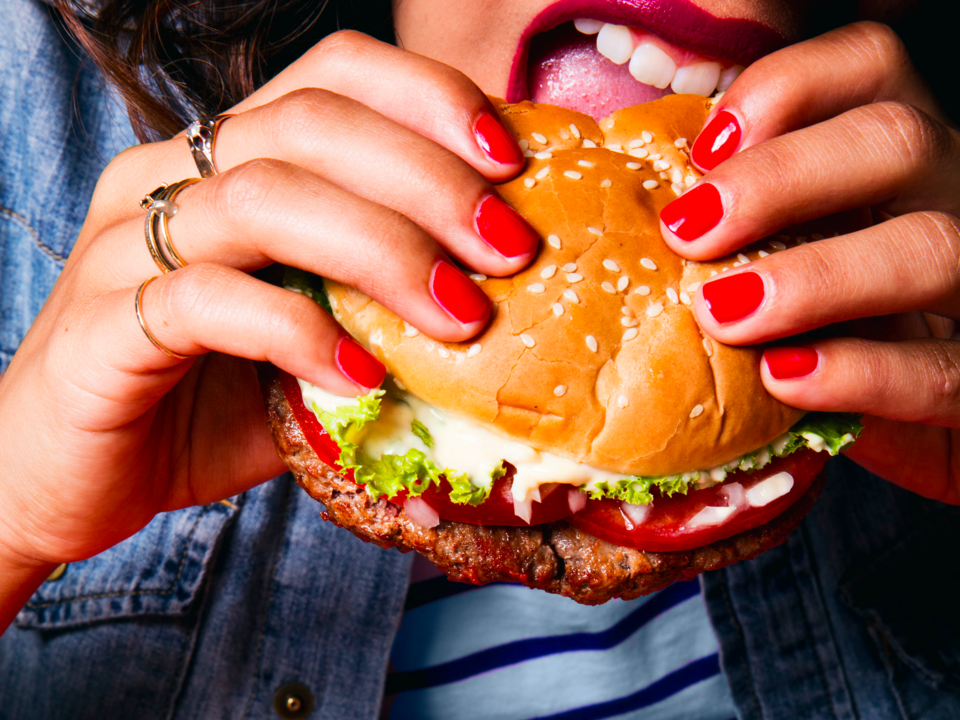Impossible Burger
The veggie burger that bleeds – does that sound appetizing or like something out of a horror story? The Impossible Burger, handcrafted by the scientists of Impossible Foods, is a plant-based meat substitute that apparently looks and tastes like real meat. If the sizzling sounds and meaty aroma are not enough to convince you that it is meat, then its bleeding interior will certainly take you aback. Have you ever thought of ordering your veggie burger medium rare?
Hong Kong is the first city outside of the United States to launch this Impossible Burger. Impossible Foods claims that the “meat” is great for the environment, as its coming-to-be “uses 95% less land, 74% less water, and creates 87% less greenhouse gas emissions” due to their beef being, essentially, cow-less. Good for the environment, indeed, but how good exactly is it for your body?
Why Does It Bleed?
In meat, the heme in myoglobin (oxygen-binding protein) presents us with that glorious medium rare reddish-pink appearance and contributes to the metallic, meaty flavor that some of us know and love. Impossible Foods targeted this, and discovered that a soy derived protein, leghemoglobin, could give shockingly similar results. Since it would take way too many soybeans to produce the amount of leghemoglobin for a marketable amount of “meat”, they use genetically modified yeast instead to pump out this protein. Although some studies have concluded that it is most likely safe especially at this low level of consumption, the FDA has not yet designated leghemoglobin as ‘generally regarded as safe’
But What Else is in the Impossible Burger?
On their official website they state: “Our burger is made from simple, all-natural ingredients such as wheat, coconut oil, and potatoes.” However, looking at their FAQs gives away the full ingredient list.
They contain natural ingredients, but mostly derivatives of these ingredients like proteins isolated from wheat, potato, and soy. During processing, much of the fiber, vitamins, and minerals are lost, leaving behind just highly absorbable carbohydrates. That may be why the creators have added so many vitamins back.
The impossible meat also contains a whole bunch of sodium — 470mg. That’s a whopping 20% of the recommended dietary allowance! Excessive sodium intake is linked with hypertension, which ultimately may lead to cardiovascular complications.
Bottom Line
Like a monstrous BLT burger, the Impossible Burger should be eaten sparingly. Missing the taste of meat as a vegan/vegetarian or doing the Earth a small favor are good reasons to give the Impossible Burger a chance. However, it isn’t something that should replace all meat in your diet if you’re looking for a healthy option. Albeit, it isn’t that healthy!
References:
FAQ. (n.d.). Retrieved from https://www.impossiblefoods.com/faq/
Fraser, R. Z., Shitut, M., Agrawal, P., Mendes, O., & Klapholz, S. (2018). Safety Evaluation of Soy Leghemoglobin Protein Preparation Derived From Pichia pastoris, Intended for Use as a Flavor Catalyst in Plant-Based Meat. International Journal of Toxicology, 37(3), 109158181876631. doi:10.1177/1091581818766318
Impossible Burger. (n.d.). Retrieved June 15, 2018, from https://www.impossiblefoods.com/burger/
Lemonier, G. (2017, December 05). Great Veggie Burgers are Here, But Are They Any Healthier? Retrieved June 15, 2018, from https://www.mensjournal.com/food-drink/great-veggie-burgers-are-here-but-are-they-any-healthier-w449490/
Pierson, D. (2017, August 08). Why environmentalists want Impossible Burger’s meatless patties to be pulled off menus. Retrieved from http://www.latimes.com/business/la-fi-impossible-burger-fda-20170808-story.html




